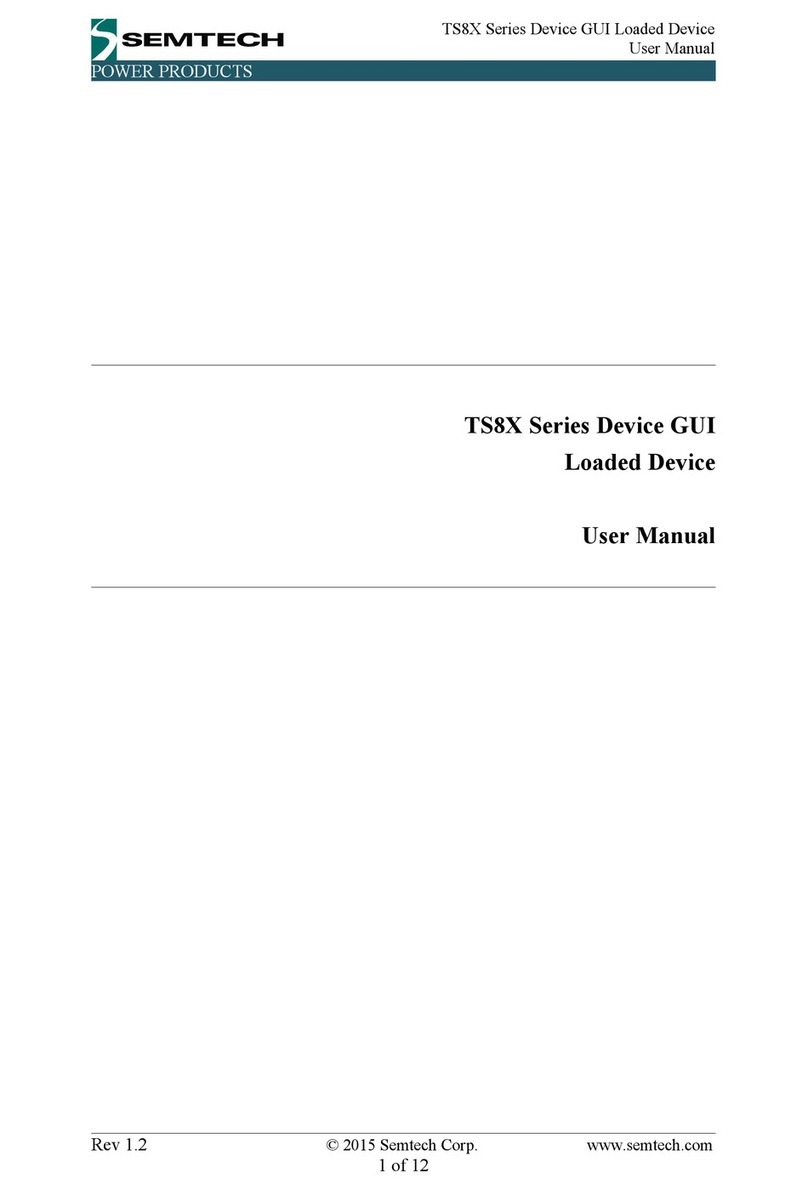TSWITX-G4-EVM
www.semtech.com
2 of 18
User Guide Rev 1.00
Receiver
Transmitter
Control
Electromagnetic
Flux
Controller CoilDriver
Power
Supply
Supply
Regulation Rectifier
End
Equipment
Power
Wireless Charging Concepts
Wireless power transfer is, essentially, a transformer. Power is provided to a primary coil which produces
an electromagnetic (EM) field. In this field, a secondary coil is placed. The EM field induces a current into
the secondary coil, providing power to whatever it is connected to.
However, unlike a conventional power transformer that operates at line frequencies and requires an iron
core for efficiency, low power wireless power systems for wearable devices have been designed to
operate in the 1 MHz range, and thus can perform efficiently with an air core. As such, the primary and
secondary windings, if closely spaced, can be in separate devices, the primary being part of a transmitter
and the secondary within a receiver. This implementation can also be described as a radio broadcast
process, and as such, these transformer coils can also be seen as antennas with equal validity, and the
two terms will be used interchangeably in this text.
Wireless power systems differ in another major aspect from conventional transformers, in that they are
intelligently managed. A transmitter will only provide power when a receiver is present, and only produce
the amount of power requested by the receiver. The intelligent management of the wireless power
transmission process is achieved though the programming of the TS80002, which first searches for a
receiver. Once found, the receiver informs the transmitter of its power requirements, and transmission
begins. The system then verifies the right amount of power is being sent. The receiver will continually
provide ongoing requests for power to maintain the transaction. If the requests cease, the transaction
terminates. Via this protocol, even complex charging patterns can be supported, as the transmitter can
provide varying amounts of power at different times, as requested by the receiver. Should the receiver
require no further power, such as when a battery charge is completed, it can request no further power be
sent, and the transmitter will reduce its output accordingly.
Wireless power systems have been broken into three basic power categories. “Wearable” devices, such
as headsets, wrist-band devices, medical sensors, and so forth - all operate in the low power range, up to
5 watts. Medium power devices, in the 5- to 15-watt range, include most handheld devices, such as cell
phones, tablets, and medical electronics. High power wireless systems are intended to support devices
such as power tools, radio controlled (“RC”) devices such as drones, and other equipment requiring 15 to
100 watts of power.





























